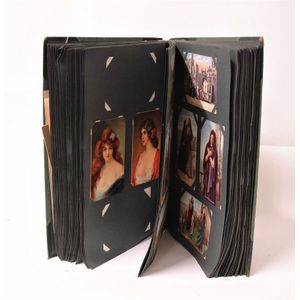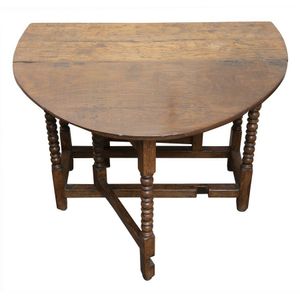17th Century Oak Gate-Leg Table
A William and Mary oak gate-leg table, late 17th century, the oval top above a plain frieze with a drawer to one side, raised on reel-turned supports united by square stretchers, 68 cm high, 92 cm wide, 114 cm long (fully extended),
You must be a subscriber, and be logged in to view price and dealer details.
Subscribe Now to view actual auction price for this item
When you subscribe, you have the option of setting the currency in which to display prices to $Au, $US, $NZ or Stg.
This item has been sold, and the description, image and price are for reference purposes only.
- Frieze - An architectural term denoting the flat, shaped or convex horizontal surface of furniture, between the architrave and the cornice, usually found on a cabinet or bookcase, or on desks and tables where it may include drawers, the area between the top and the legs. In ceramics, the term refers to the banding, of usually a repeating pattern, on the rims of plates and vases.
- Oak - Native to Europe and England, oak has been used for joinery, furniture and building since the beginning of the medieval civilisation. It is a pale yellow in colour when freshly cut and darkens with age to a mid brown colour.
Oak as a furniture timber was superceded by walnut in the 17th century, and in the 18th century by mahogany,
Semi-fossilised bog oak is black in colour, and is found in peat bogs where the trees have fallen and been preserved from decay by the bog. It is used for jewellery and small carved trinkets.
Pollard oak is taken from an oak that has been regularly pollarded, that is the upper branches have been removed at the top of the trunk, result that new branches would appear, and over time the top would become ball-like. . When harvested and sawn, the timber displays a continuous surface of knotty circles. The timber was scarce and expensive and was used in more expensive pieces of furniture in the Regency and Victorian periods.
This item has been included into following indexes:
Visually similar items

Early Royal Doulton 'Cobbler' figure. HN1706. Signed Noke, height 21 cm
Sold by
in
for
You can display prices in $Au, $US, $NZ or Stg.

Small antique French marriage dome standing 35 cm high
Sold by
in
for
You can display prices in $Au, $US, $NZ or Stg.

A pair of Neo-Classical reconstituted stone urns
Sold by
in
for
You can display prices in $Au, $US, $NZ or Stg.

A large postcard album, filled with vintage coloured postcards featuring Asti beauties, biblical scenes, copies of Old Masters, as well as many old black and white travel postcards. Provenance: The Flower Family Collection.
Sold by
in
for
You can display prices in $Au, $US, $NZ or Stg.
